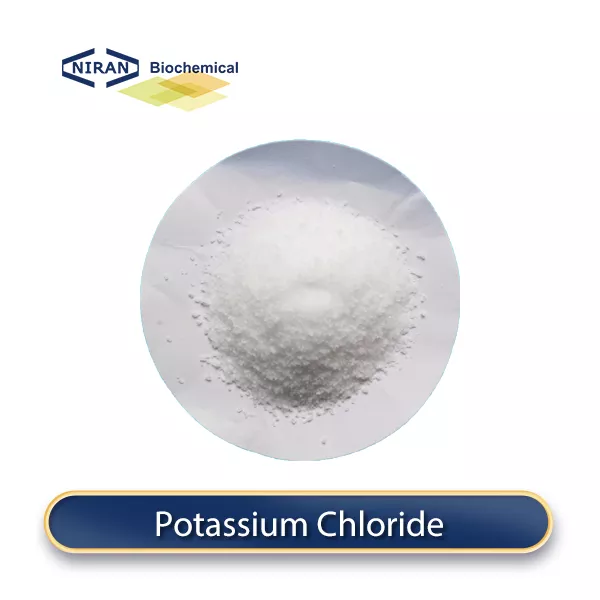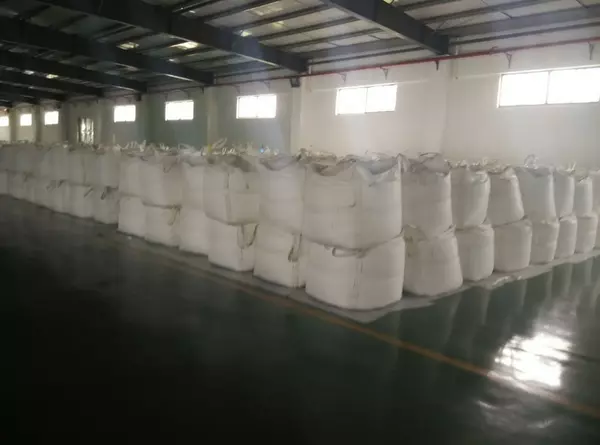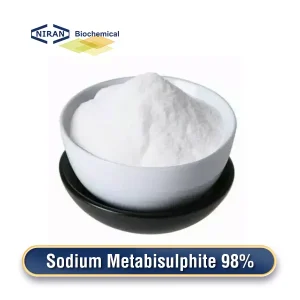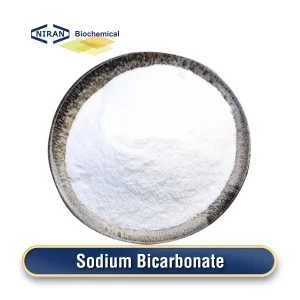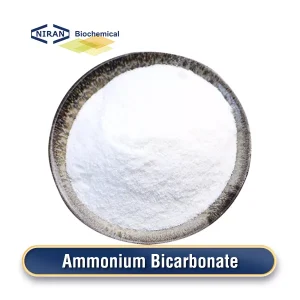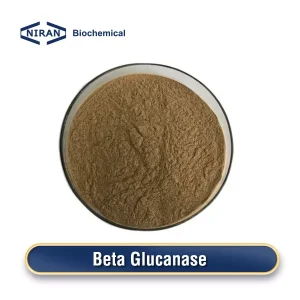Niran Biochemical
YOUR RELIABLE FOOD INGREDIENTS
Send Inquiry
Home » Products » Other Food Ingredients » Potassium Chloride
Potassium Chloride
- CAS: 7447-40-7
- Chemical Formula: KCl
- Certification: KOSHER, ISO, HALAL, FSSC22000, BRC, etc.
- MOQ: 1000KG
- Shelf Life: 2 Years
Inquire Product
Product Description
What is Potassium chloride?
Potassium chloride is an inorganic compound that looks like table salt, presenting as a white crystalline powder. It easily agglomerates and is hygroscopic. As the temperature rises, its solubility in water increases quickly. It often undergoes double decomposition with sodium salt to generate new potassium salt. It is frequently added to mineral water and low-sodium salt.
There are mainly the following methods for preparing potassium chloride in China:
1. Extracted from potassium salt minerals, such as potassium chloride ore, natural potassium chloride in potassium salt minerals, etc.
2.Produced through chemical processes, mainly prepared by reacting sodium chloride with potassium salt. To guarantee product stability and quality, industrial production uses this method more frequently.
Related parameters:
| ITEMS | STANDARD |
| Identification | Positive |
| Whiteness | > 80 |
| Assay | > 99% |
| Loss on Drying | ≤0.5% |
| Acidity and Alkalinity | ≤1% |
| Solubility | Freely soluble in water, practically insoluble in ethanol |
| Heavy Metals (as Pb) | ≤1mg/ kg |
| Arsenic | ≤0.5mg/ kg |
| Ammonium (as NH﹢4) | ≤100mg/ kg |
| Sodium Chloride | ≤1.45% |
| Water Insoluble Impurities | ≤0.05% |
| Water Insoluble Residue | ≤0.05% |
Recommended dosage:
| Food name | Maximum usage(g/kg) |
| Bread and dough products | 0.3 – 3 g/kg |
| Cured meats | 2 – 5 g/kg |
| Ham and sausages | 1 – 3 g/kg |
| Prepared meat products | 1 – 2 g/kg |
| Smoked meat products | 0.5 – 1.5 g/kg |
| Ham and bacon | 0.3 – 1 g/kg |
| Prepared cooked food | 0.1 – 0.5 g/kg |
| Pickled food | 0.1 – 0.3 g/kg |
| Pickled fish | 0.1 – 0.3 g/kg |
| Bakery | 0.1 – 0.3 g/kg |
| Sauces and seasonings | 0.1 – 0.3 g/kg |
| Biscuits | 0.1 – 0.3 g/kg |
| Fruit products | 0.1 – 0.3 g/kg |
| Confectionery products | 0.1 – 0.3 g/kg |
Potassium chloride has a wide range of uses
- Function of replacing salt: Potassium chloride can be used as a substitute for table salt (sodium chloride), especially in foods that need to reduce sodium content. It can partially or completely replace table salt, thereby reducing the sodium content in food and helping to control health problems such as high blood pressure.
- Antioxidant: Potassium chloride can be used as an antioxidant in some foods to help extend the shelf life and stability of foods and prevent foods from spoiling due to oxidation.
- Enhance flavor: In some cases, potassium chloride can enhance the flavor of foods, especially in cured meats and other food processing, helping to maintain and enhance the flavor characteristics of raw materials.
- PH adjuster: The addition of potassium chloride can adjust the pH value of foods, and sometimes it can be used to adjust the acidity and alkalinity to suit specific processing needs or food formulations.
- Nutritional fortification: In some cases, potassium chloride can also be used as a nutritional fortifier to provide potassium to foods, which helps balance the body’s electrolyte and nutrient intake.
User asked question:
Q: In table salt, can potassium chloride take the place of sodium chloride?
A: In table salt, potassium chloride can either totally or partially substitute sodium chloride. The main purpose of this substitution is to reduce the sodium content in food, as a high-sodium diet is associated with high blood pressure and other health problems. Potassium chloride is widely used in the food industry, especially in products that need to reduce sodium intake, such as cured meats, canned foods, and prepared foods.
However, it is important to note that potassium chloride and sodium chloride have different chemical and sensory properties. At high concentrations, potassium chloride may have a certain impact on the taste of food, sometimes with a bitter taste.
Therefore, when using potassium chloride to replace table salt, appropriate adjustments may need to be made to the formulation and processing methods to ensure that the taste and quality of the food still meet consumer expectations.

